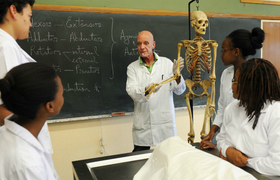‘Your body is just your coat’
29 November 2017 | Story Helen Swingler. Photos Robyn Walker.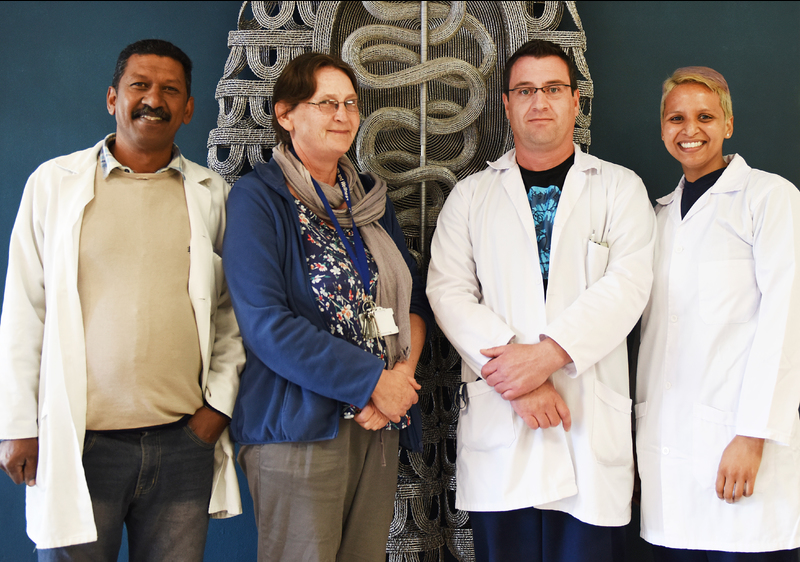
Steven Williams is not what you’d expect from an anatomy teacher. In life he was a fireman, with stories to tell: babies brought out of burning shacks and climbing ladders eight storeys high to rescue fire victims. Even in death he found a way to give, donating his body to the medical school where he’s been teaching second- and third-year students the rudiments of anatomy.
Williams was one of many body donors honoured at the annual memorialisation ceremony in the Faculty of Health Sciences this month – a programme of tributes, poems and creative offerings by second-years.
These cadavers – a mix of age, gender, race and sex – underpin undergraduate training in the anatomy laboratory as well as workshops where surgical specialists are trained in new surgical techniques.
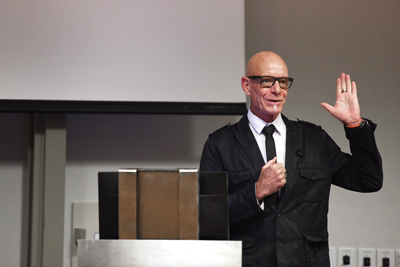
Even in a multimedia era of virtual reality, dissecting a body in the laboratory is an essential part of teaching, said host Professor Graham Louw, who oversees the early years of the MBChB programme. This part of medical teaching relies on a body donor programme as well as on state institutions that donate unclaimed or indigent bodies; usually paupers with no known next of kin.
A man called Uncle
Among the students who delivered tributes at the memorial ceremony, Ilyaas Amien talked of a layered experience – how his group had extracted skin, muscle and fat from their cadaver.
“But what struck me was that we could not extract who this person was … Even though we were touching, feeling and seeing. There’s so much more to life than the standard nature of a human being.”
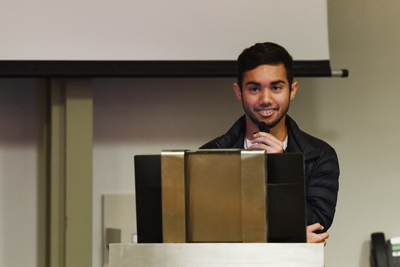
Schalk van der Merwe said his group had named their cadaver Uncle.
“He looked like an uncle; just some nice, old guy. At first, we were afraid to touch him too much ... It’s like meeting someone new. This year I saw and learnt a lot from Uncle … You really have to see to appreciate how everyone has the same bones, muscles, nerves, yet inside we’re all shaped differently.
“Uncle was roughly a 65-year-old man. He’s very tall and very thin. Later, dissecting his lungs we found he’d died of TB. He had very little fat right through his body and this bothered me. It still bothers me.
“To be that thin, you have to be really sick and to have gone without food for a long time. I’m saddened by this. To die suffering … something doesn’t feel right. But there are people who die like this every day.
“I’m not hoping to change the world in one day, but I want to at least be able to alleviate some of the suffering. I thank Uncle for what his body taught me.”
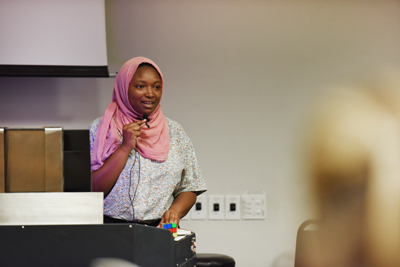
Student Buhle Zimba read out the tribute of a donor’s daughter.
“My mother always intended to become an organ donor, but when she got older she said her organs were no longer viable. She said, ‘My heart is older, more tired, and my eyes can no longer thread a needle. I will instead donate my body to medical research.’
“I had mixed feelings. I said to her, ‘Do you really want a group of young strangers chatting over your exposed body?’ She said, ‘My girl, your body is just your coat. If I can help even one student become a good doctor, I will have saved the lives of thousands.’ In the document she left me, she asked me to thank the team that would learn from her discarded coat.”
Caroline Powrie has administered the body donor programme for the past 20 years. A senior technical officer in the Division of Clinical Anatomy and Biological Anthropology, she keeps a database of around 2 000 donors.
Her job is to market the programme to organisations, such as the Salvation Army and Organ Donation Foundation (“Though we don’t take organ donations”), and people who might consider donating their bodies.
They don’t accept accident victims, bodies with organs removed or bodies that have undergone autopsies.
“These are not viable for teaching.”
Oldest donor
The programme pays a contracted undertaker to collect bodies within a radius of 100 km of the city.
“The oldest donor on the programme is 103 – and still going strong.”
“The oldest donor on the programme is 103 – and still going strong.”
Powrie believes that as people live longer there will be many more centenarians.
She has had some interesting calls in her years of administering the programme. One caller asked if bodies were hung on butcher hooks.
“There are a lot of misconceptions out there.”
It takes a special person to deal with the sensitivities and emotions of dealing with donors and their families. And Powrie says she’s been fortunate to have met some extraordinary people through the programme.
This requires 40 to 50 bodies a year. Each cadaver is shared between six second-years, who dissect the torso and limbs, and six or seven third-year students, who work on the head and neck. These future doctors will each treat thousands of patients during their careers.
“You realise then what an incredible gift each body has been,” says Louw.
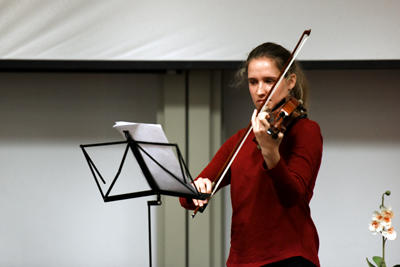
Cadaver care
Senior technical officer Michael Cassar and his team of Deon Abrahams and Shirees Benjamin are part of the ‘backroom team’. Cassar ensures that the deaths are registered with Home Affairs. Then they wait three months to be sure no one comes forward to claim the body.
Once a body arrives at the laboratory it is washed and embalmed using a mixture of embalming chemicals and water, which will keep the cadaver fresh for years in the controlled environment. These will be used for dissection the following year, after which the remains will be cremated and the ashes returned to donors’ families where requested.
Cassar learnt embalming at Doves Funeral Services before joining UCT 15 years ago. A background in anatomy is important for the job and, he adds dryly, an ability to work with the deceased.
“It’s not for everyone.”
Respect and dignity
Assistant Deon Abrahams has worked in the laboratory for 38 years. He learnt embalming, specimen preparation and dissection from old labs hands.
Assistant Shirees Benjamin, just six months into the job, has 10 years of forensic mortuary experience. There’s no formal qualification for a mortuary technician or a forensic assistant, so most of it is on-the-job training, she says.
Cassar and his team take their work seriously. It’s part of maintaining respect and dignity, even in death.
“Because that body is a teacher; it’s like a textbook,” says Abrahams.
There’s no fooling around in the laboratory, no food brought in (“I will allow water”). Students must wear their lab coats and proper shoes. And the lab is tightly secured.
“It’s all very private. We don’t allow just anyone to go in there.”
Before the anatomy sessions, Abrahams and Benjamin will remove the opaque white plastic covers from the cadavers (kept on tables), wet the bodies with embalming fluid and prepare them for the day’s dissections.
Benjamin ensures that the ‘chips’ – bits of skin, fat or bone removed during dissection – are meticulously collected and marked, to be reunited with the cadaver once the year is over.
“These are kept in one container. This goes into a marked bag and is cremated with the body afterwards.”
Oom Daan se Kop
Abrahams and Benjamin also prepare wet specimens and sections of the skeletons for teaching purposes: the sternum, breastbone, ribcage or skull. This needs physical strength − and power tools.
Cadavers that aren’t going to be cremated are skeletonised: the flesh removed, the bones washed, boiled and macerated. Skeletons can last up to 200 years.
They also keep a large range of specimens, some more than 30 years old. Medical teachers have their favourites, like Oom Daan se Kop, The Cobra (a spine with the sacrum showing), and The Butterfly.
The job can be a conversation starter – or stopper − says Benjamin.
“People normally stare at you with open mouths,” chirps Abrahams.
Benjamin adds, “I always get ‘How do you sleep at night?’…. It’s not that we lose touch with being humane. We still have an empathetic and emotional side.”
 This work is licensed under a Creative Commons Attribution-NoDerivatives 4.0 International License.
This work is licensed under a Creative Commons Attribution-NoDerivatives 4.0 International License.
Please view the republishing articles page for more information.







